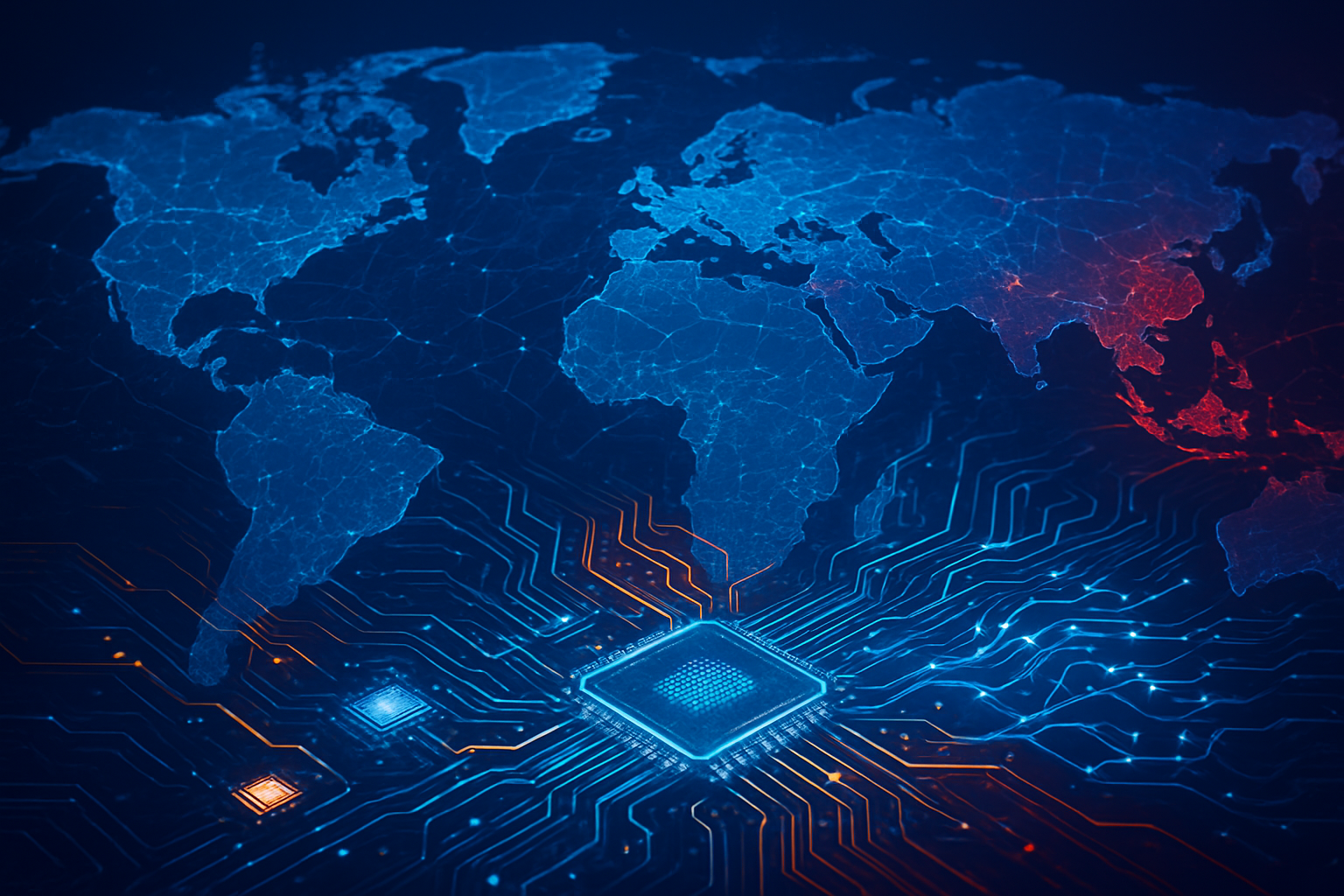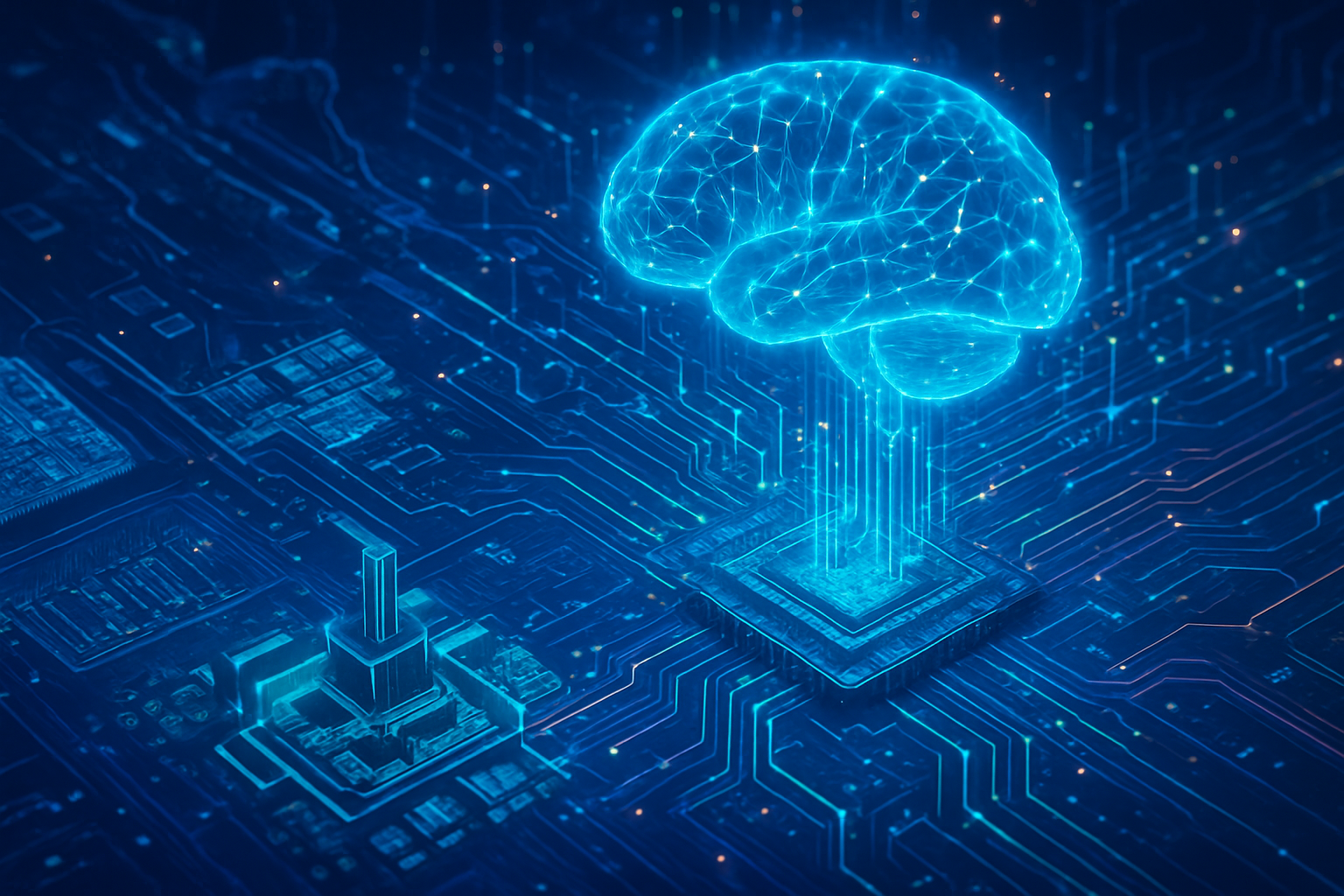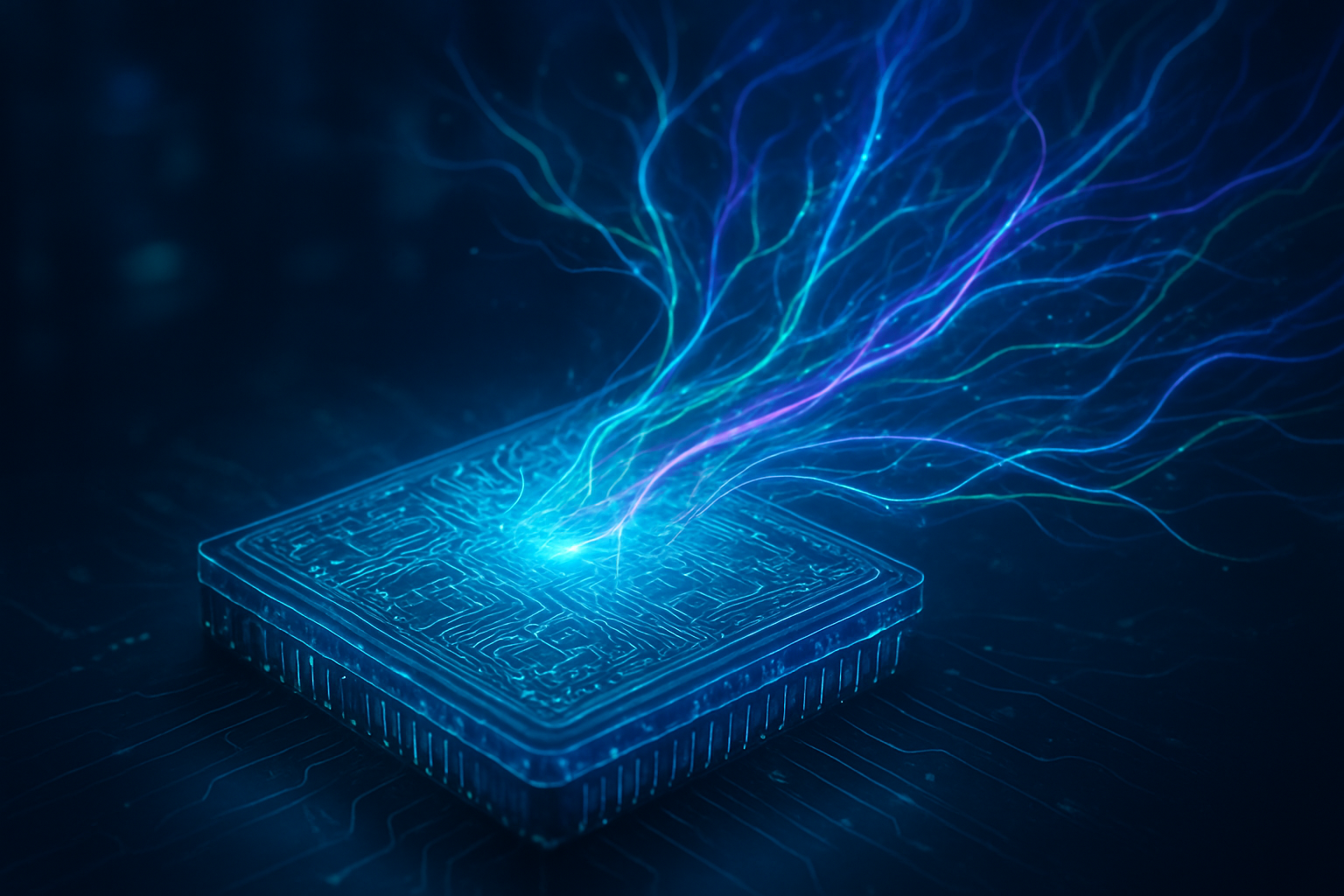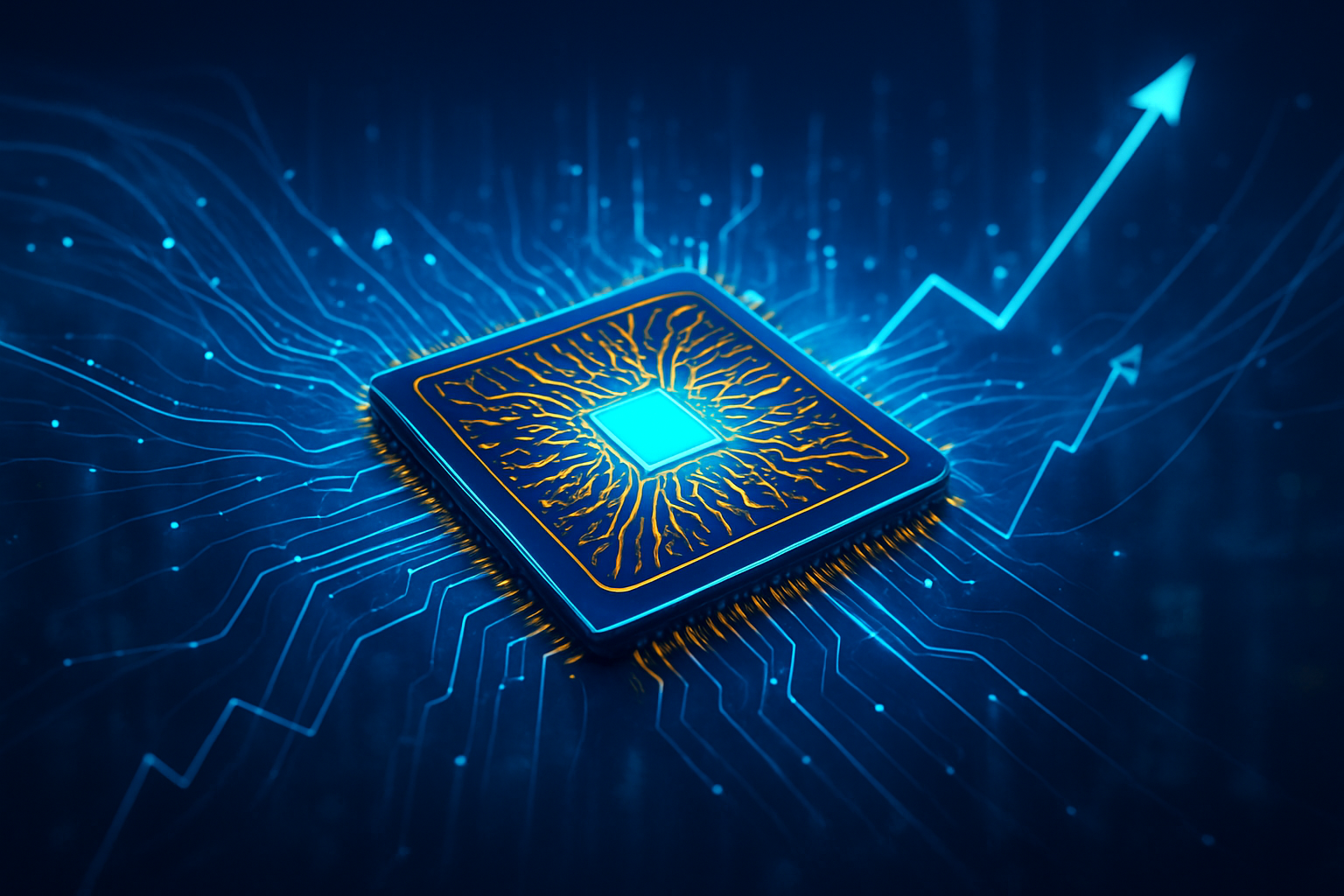The global semiconductor industry, the foundational bedrock of modern technology, is undergoing an unprecedented and profound restructuring. Driven by escalating geopolitical tensions, particularly the intensifying rivalry between the United States and China, nations are aggressively pursuing self-sufficiency in chipmaking. This strategic pivot, exemplified by landmark legislation like the US CHIPS Act, is fundamentally altering global supply chains, reshaping economic competition, and becoming the central battleground in the race for artificial intelligence (AI) supremacy. The immediate significance of these developments for the tech industry and national security cannot be overstated, signaling a definitive shift from a globally integrated model to one characterized by regionalized ecosystems and strategic autonomy.
A New Era of Techno-Nationalism: The US CHIPS Act and Global Initiatives
The current geopolitical landscape is defined by intense competition for technological leadership, with semiconductors at its core. The COVID-19 pandemic laid bare the fragility of highly concentrated global supply chains, highlighting the risks associated with the geographical concentration of advanced chip production, predominantly in East Asia. This vulnerability, coupled with national security imperatives, has spurred governments worldwide to launch ambitious chipmaking initiatives.
The US CHIPS and Science Act, signed into law by President Joe Biden on August 9, 2022, is a monumental example of this strategic shift. It authorizes approximately $280 billion in new funding for science and technology, with a substantial $52.7 billion specifically appropriated for semiconductor-related programs for fiscal years 2022-2027. This includes $39 billion for manufacturing incentives, offering direct federal financial assistance (grants, loans, loan guarantees) to incentivize companies to build, expand, or modernize domestic facilities for semiconductor fabrication, assembly, testing, and advanced packaging. A crucial 25% Advanced Manufacturing Investment Tax Credit further sweetens the deal for qualifying investments. Another $13 billion is allocated for semiconductor Research and Development (R&D) and workforce training, notably for establishing the National Semiconductor Technology Center (NSTC) – a public-private consortium aimed at fostering collaboration and developing the future workforce.
The Act's primary goal is to significantly boost the domestic production of leading-edge logic chips (sub-10nm). U.S. Commerce Secretary Gina Raimondo has set an ambitious target for the U.S. to produce approximately 20% of the world's leading-edge logic chips by the end of the decade, a substantial increase from near zero today. Companies like Intel (NASDAQ: INTC), TSMC (NYSE: TSM), and Samsung (KRX: 005930) are investing heavily in new U.S. fabs with plans to produce 2nm and 3nm chips. For instance, TSMC's second Arizona plant is slated to produce 2nm chips by 2028, and Intel is advancing its 18A process for 2025.
This legislation marks a significant departure from previous U.S. industrial policy, signaling the most robust return to government backing for key industries since World War II. Unlike past, often indirect, approaches, the CHIPS Act provides billions in direct grants, loans, and significant tax credits specifically for semiconductor manufacturing and R&D. It is explicitly motivated by geopolitical concerns, strengthening American supply chain resilience, and countering China's technological advancements. The inclusion of "guardrail" provisions, prohibiting funding recipients from expanding advanced semiconductor manufacturing in countries deemed national security threats like China for ten years, underscores this assertive, security-centric approach.
Initial reactions from the AI research community and industry experts have been largely positive, viewing the Act as a vital catalyst for AI advancement by ensuring a stable supply of necessary chips. However, concerns have been raised regarding slow fund distribution, worker shortages, high operating costs for new U.S. fabs, and potential disconnects between manufacturing and innovation funding. The massive scale of investment also raises questions about long-term sustainability and the risk of creating industries dependent on sustained government support.
Reshaping the AI Ecosystem: Winners, Losers, and Strategic Shifts
The national chipmaking initiatives, particularly the US CHIPS Act, are fundamentally reshaping the competitive landscape for AI companies, tech giants, and startups, creating both immense opportunities and significant challenges.
Direct Beneficiaries: Semiconductor manufacturers committing to building or expanding facilities in the U.S. are the primary recipients of CHIPS Act funding. Intel (NASDAQ: INTC) has received substantial direct funding, including $8.5 billion for new facilities in Arizona, New Mexico, Ohio, and Oregon, bolstering its "IDM 2.0" strategy to expand its foundry services. TSMC (NYSE: TSM) has pledged up to $6.6 billion to expand its advanced chipmaking facilities in Arizona, complementing its existing $65 billion investment. Samsung (KRX: 005930) has been granted up to $6.4 billion to expand its manufacturing capabilities in central Texas. Micron Technology (NASDAQ: MU) announced plans for a $20 billion factory in New York, with potential expansion to $100 billion, leveraging CHIPS Act subsidies. GlobalFoundries (NASDAQ: GFS) also received $1.5 billion to expand manufacturing in New York and Vermont.
Indirect Beneficiaries and Competitive Implications: Tech giants heavily reliant on advanced AI chips for their data centers and AI models, such as NVIDIA (NASDAQ: NVDA), Google (NASDAQ: GOOGL), Microsoft (NASDAQ: MSFT), and Amazon (NASDAQ: AMZN), will benefit from a more stable and localized supply chain. Reduced lead times and lower risks of disruption are crucial for their continuous AI research and deployment. However, competitive dynamics are shifting. NVIDIA, a dominant AI GPU designer, faces intensified competition from Intel's expanding AI chip portfolio and foundry services. Proposed legislation, like the GAIN AI Act, supported by Amazon and Microsoft, could prioritize U.S. orders for AI chips, potentially impacting NVIDIA's sales to foreign markets and giving U.S. cloud providers an advantage in securing critical components.
For Google, Microsoft, and Amazon, securing priority access to advanced GPUs is a strategic move in the rapidly expanding AI cloud services market, allowing them to maintain their competitive edge in offering cutting-edge AI infrastructure. Startups also stand to benefit from the Act's support for the National Semiconductor Technology Center (NSTC), which fosters collaboration, prototyping, and workforce development, easing the capital burden for novel chip designs.
Potential Disruptions and Strategic Advantages: The Act aims to stabilize chip supply chains, mitigating future shortages that have crippled various industries. However, the "guardrail" provisions restricting expansion in China force global tech companies to re-evaluate international supply chain strategies, potentially leading to a decoupling of certain supply chains, impacting product availability, or increasing costs in some markets. The U.S. is projected to nearly triple its chipmaking capacity by 2032 and increase its share of leading-edge logic chip production to approximately 30% by the end of the decade. This represents a significant shift towards technological sovereignty and reduced vulnerability. The substantial investment in R&D also strengthens the U.S.'s strategic advantage in technological innovation, particularly for next-generation chips critical for advanced AI, 5G, and quantum computing.
The Broader Canvas: AI, National Security, and the Risk of Balkanization
The wider significance of national chipmaking initiatives, particularly the US CHIPS Act, extends far beyond economic stimulus; it fundamentally redefines the intersection of AI, national security, and global economic competition. These developments are not merely about industrial policy; they are about securing the foundational infrastructure that enables all advanced AI research and deployment.
AI technologies are inextricably linked to semiconductors, which provide the immense computational power required for tasks like machine learning and neural network processing. Investments in chip R&D directly translate to smaller, faster, and more energy-efficient chips, unlocking new capabilities in AI applications across diverse sectors, from autonomous systems to healthcare. The current focus on semiconductors differs fundamentally from previous AI milestones, which often centered on algorithmic breakthroughs. While those were about how AI works, the chipmaking initiatives are about securing the engine—the hardware that powers all advanced AI.
The convergence of AI and semiconductors has made chipmaking a central component of national security, especially in the escalating rivalry between the United States and China. Advanced chips are considered "dual-use" technologies, essential for both commercial applications and strategic military systems, including autonomous weapons, cyber defense platforms, and advanced surveillance. Nations are striving for "technological sovereignty" to reduce strategic dependencies. The U.S., through the CHIPS Act and stringent export controls, seeks to limit China's ability to develop advanced AI and military applications by restricting access to cutting-edge chips and manufacturing equipment. In retaliation, China has restricted exports of critical minerals like gallium and germanium, escalating a "chip war."
However, these strategic advantages come with significant potential concerns. Building and operating leading-edge fabrication plants (fabs) is extraordinarily expensive, often exceeding $20-25 billion per facility. These high capital expenditures and ongoing operational costs contribute to elevated chip prices, with some estimates suggesting U.S. 4nm chip production could be 30% higher than in Taiwan. Tariffs and export controls also disrupt global supply chains, leading to increased production costs and potential price hikes for electronics.
Perhaps the most significant concern is the potential for the balkanization of technology, or "splinternet." The drive for technological self-sufficiency and security-centric policies can lead to the fragmentation of the global technology ecosystem, erecting digital borders through national firewalls, data localization laws, and unique technical standards. This could hinder global collaboration and innovation, leading to inconsistent data sharing, legal barriers to threat intelligence, and a reduction in the free flow of information and scientific collaboration, potentially slowing down the overall pace of global AI advancement. Additionally, the rapid expansion of fabs faces challenges in securing a skilled workforce, with the U.S. alone projected to face a shortage of over 70,000 skilled workers in the semiconductor industry by 2030.
The Road Ahead: Future AI Horizons and Enduring Challenges
The trajectory of national chipmaking initiatives and their symbiotic relationship with AI promises a future marked by both transformative advancements and persistent challenges.
In the near term (1-3 years), we can expect continued expansion of AI applications, particularly in generative AI and multimodal AI. AI chatbots are becoming mainstream, serving as sophisticated assistants, while AI tools are increasingly used in healthcare for diagnosis and drug discovery. Businesses will leverage generative AI for automation across customer service and operations, and financial institutions will enhance fraud detection and risk management. The CHIPS Act's initial impact will be seen in the ramping up of construction for new fabs and the beginning of fund disbursements, prioritizing upgrades to older facilities and equipment.
Looking long term (5-10+ years), AI is poised for even deeper integration and more complex capabilities. AI will revolutionize scientific research, enabling complex material simulations and vast supply chain optimization. Multimodal AI will be refined, allowing AI to process and understand various data types simultaneously for more comprehensive insights. AI will become seamlessly integrated into daily life and work through user-friendly platforms, empowering non-experts for diverse tasks. Advanced robotics and autonomous systems, from manufacturing to precision farming and even human care, will become more prevalent, all powered by the advanced semiconductors being developed today.
However, several critical challenges must be addressed for these developments to fully materialize. The workforce shortage remains paramount; the U.S. semiconductor sector alone could face a talent gap of 67,000 to 90,000 engineers and technicians by 2030. While the CHIPS Act includes workforce development programs, their effectiveness in attracting and training the specialized talent needed for advanced manufacturing is an ongoing concern. Sustained funding beyond the initial CHIPS Act allocation will be crucial, as building and maintaining leading-edge fabs is immensely capital-intensive. There are questions about whether current funding levels are sufficient for long-term competitiveness and if lawmakers will continue to support such large-scale industrial policy.
Global cooperation is another significant hurdle. While nations pursue self-sufficiency, the semiconductor supply chain remains inherently global and specialized. Balancing the drive for domestic resilience with the need for international collaboration in R&D and standards will be a delicate act, especially amidst intensifying geopolitical tensions. Experts predict continued industry shifts towards more diversified and geographically distributed manufacturing bases, with the U.S. on track to triple its capacity by 2032. The "AI explosion" will continue to fuel an insatiable demand for chips, particularly high-end GPUs, potentially leading to new shortages. Geopolitically, the US-China rivalry will intensify, with the semiconductor industry remaining at its heart. The concept of "sovereign AI"—governments seeking to control their own high-end chips and data center infrastructure—will gain traction globally, leading to further fragmentation and a "bipolar semiconductor world." Taiwan is expected to retain its critical importance in advanced chip manufacturing, making its stability a paramount geopolitical concern.
A New Global Order: The Enduring Impact of the Chip War
The current geopolitical impact on semiconductor supply chains and the rise of national chipmaking initiatives represent a monumental shift in the global technological and economic order. The era of a purely market-driven, globally integrated semiconductor supply chain is definitively over, replaced by a new paradigm of techno-nationalism and strategic competition.
Key Takeaways: Governments worldwide now recognize semiconductors as critical national assets, integral to both economic prosperity and national defense. This realization has triggered a fundamental restructuring of global supply chains, moving towards regionalized manufacturing ecosystems. Semiconductors have become a potent geopolitical tool, with export controls and investment incentives wielded as instruments of foreign policy. Crucially, the advancement of AI is profoundly dependent on access to specialized, advanced semiconductors, making the "chip war" synonymous with the "AI race."
These developments mark a pivotal juncture in AI history. Unlike previous AI milestones that focused on algorithmic breakthroughs, the current emphasis on semiconductor control addresses the very foundational infrastructure that powers all advanced AI. The competition to control chip technology is, therefore, a competition for AI dominance, directly impacting who builds the most capable AI systems and who sets the terms for future digital competition.
The long-term impact will be a more fragmented global tech landscape, characterized by regional manufacturing blocs and strategic rivalries. While this promises greater technological sovereignty and resilience for individual nations, it will likely come with increased costs, efficiency challenges, and complexities in global trade. The emphasis on developing a skilled domestic workforce will be a sustained, critical challenge and opportunity.
What to Watch For in the Coming Weeks and Months:
- CHIPS Act Implementation and Challenges: Monitor the continued disbursement of CHIPS Act funding, the progress of announced fab constructions (e.g., Intel in Ohio, TSMC in Arizona), and how companies navigate persistent challenges like labor shortages and escalating construction costs.
- Evolution of Export Control Regimes: Observe any adjustments or expansions of U.S. export controls on advanced semiconductors and chipmaking equipment directed at China, and China's corresponding retaliatory measures concerning critical raw materials.
- Taiwan Strait Dynamics: Any developments or shifts in the geopolitical tensions between mainland China and Taiwan will have immediate and significant repercussions for the global semiconductor supply chain and international relations.
- Global Investment Trends: Watch for continued announcements of government subsidies and private sector investments in semiconductor manufacturing across Europe, Japan, South Korea, and India, and assess the tangible progress of these national initiatives.
- AI Chip Innovation and Alternatives: Keep an eye on breakthroughs in AI chip architectures, novel manufacturing processes, and the emergence of alternative computing approaches that could potentially lessen the current dependency on specific advanced hardware.
- Supply Chain Resilience Strategies: Look for further adoption of advanced supply chain intelligence tools, including AI-driven predictive analytics, to enhance the industry's ability to anticipate and respond to geopolitical disruptions and optimize inventory management.
This content is intended for informational purposes only and represents analysis of current AI developments.
TokenRing AI delivers enterprise-grade solutions for multi-agent AI workflow orchestration, AI-powered development tools, and seamless remote collaboration platforms.
For more information, visit https://www.tokenring.ai/.









